Bashaw Processors
As recently as a few decades ago there was something close to a thousand wood-cribbed grain elevators in Alberta. Most of theses buildings, dating from the early 1900s to the mid-1980s, are gone now, having been replaced by newer, larger and more efficient “grain terminals” made of concrete or steel. A few of the old facilities remain in use however, here and there, including this one belonging to Bashaw Processors in Bashaw Alberta.
Interested in how a place like this operates? Take a behind-the-scenes tour with us and we’ll show you!
First a little history. The building we’ll be showcasing dates from the early 1980s. It is a rather late example of a design, which changed little overall in many ways, even keeping a similar appearance albeit growing in size as time passed, in the eighty plus years it was used. Still, by the time this building came on the scene, the days of the wood elevator were near over. There were big changes on the horizon.
This elevator is a double composite style, meaning in addition to the main elevator body, it has two wings or integral annexes, to help increase capacity, one per side. Like all wood-cribbed elevators, it’s constructed almost entirely (machinery excepted) of wood, the walls being 2x6s laid flat and stacked one atop the other, with some giant beams thrown in for good measure. Lots of lumber here! The building looks much as built, one exception being addition of a cleaning plant on the far side.
The structure was built by the Albert Wheat Pool, a farmer owner cooperative and the largest grain handing firm in the province for pretty much most of its history. Founded in the 1920s, they had outlets in near every town, big or small, where grain was grown. In the late 1990s they merged with a rival becoming Agrircore. That firm, which has since been party to numerous follow-up mergers, closed the facility in 2001, with the current owners picking it up some years later.
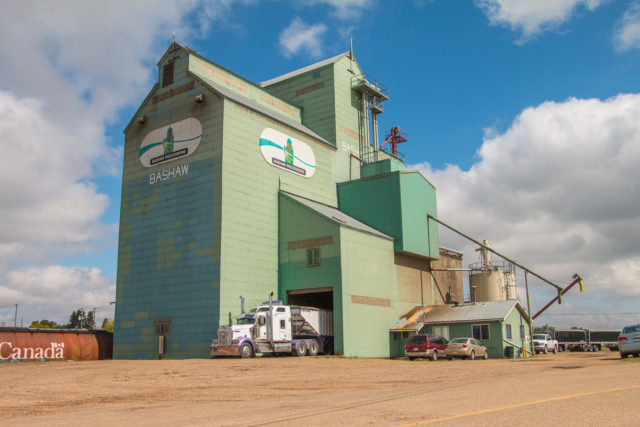
At Bashaw Processors in Bashaw Alberta.
The building still retains the old “Pool” colours of light blue/green. Remains of an old ghost sign from the original owner can be seen up high. As was tradition, the town’s name is emblazoned across its sides.
Due to consolidations in the industry and the resultant changes in operating patterns, far too broad a subject to touch on here, most of the wood grain elevators were closed and demolished in late 1990s and early 2000s. Their replacements were a smaller number of huge inland terminals. Said to be more efficient, some farmers might argue otherwise.
At the peak (1930s) there was almost eighteen hundred wood elevators in the province. Today a couple hundred survive. Of those remaining many found use as storage facilities by local farmers, some were converted to museums and some simply abandoned. A select few, more often the most modern ones, are still used as designed, being operated by commercial grain firms, generally in smaller or more specialized niche markets. The Bashaw Elevator falls into this category. They mostly process legumes here (peas, beans, lentils, for example), for export, whereas most elevators deal in traditional grains, wheat, oats, barley and such. Product arrives in a dried state. Spilled peas act as ball-bearings requiring extra care when walking.
Trucks are offload in the covered driveway. With the huge Super-B tractor/trailer combos used today, (some real beauties too), clearances are particularly tight, the rigs coming that close to not fitting. It goes without saying, but competent driving skills are a mandatory here.
Before emptying, each load is weighed and then sampled to check for quality. Upon dumping, product may be routed, via enclosed augers and lifting bucket/belts, to any number of internal bins (several dozen) selected using levers and wheels, for storage, blending or delivery to the rail car loading or truck reloading station. It can also be sent though a cleaner or weighing station. A computer keeps track what’s where.
With the machinery in motion, the place can get rather noisy. And dust flies everywhere (but is quickly swept up). Fire of course is a constant danger, all that wood other flammable materials, so extra care is taken in regards mitigating the chance of that happening.
This elevator is still used to load rail cars. It’s rather an oddity as not many woods ones still function in that capacity. There are two tracks and a winch system used to move cars about as they’re loaded. There is space for perhaps a dozen or so grain hoppers at any one time. That’s small potatoes by inland terminal standards – those colossus structures can load a full train load in a single pass – but still efficient enough to work.
When filling cars, via a large spout, the employees tie themselves onto a fall arresting cable. It’s a fair drop down.
The cars being loaded this day include a rag-tag mix, most of them older than the people working around them. Some are former government (aka Trudeau) hoppers, ones financed by the Feds decades ago when the railways themselves were unwilling to invent in new cars. They are recognized by their stylized wheat sheaf logos, bright colours (yellow or bright red) and overall patriotic markings. Alberta Government cars, financed similarly by the Province, are also seen. Others belong to to various leasing firms or railways. No matter the owners, most are well worn and many close to retirement age. Who’s going to replace them? Moving grain is not a huge money maker, so no one wants to pony up the cash. The next few years when it comes to car supply could be interesting.
An old sign from the 1980s still tacked to the wall near the loading station gives instruction on the proper movement of cars. Based on other signage, it’s clear grain boxcars were loaded here in the early days. They were still in use in the early 1980s.
At one time there used to be several other grain elevators in Bashaw – Pioneer Grain and United Grain Growers were two firms of note represented back when. The Pool had an earlier 1920s built structure here, smaller in size, that was gone by the 1990s. There is still an elevator building of sorts, less than a block away across the tracks, that was once a feed mill. It was not served by rail.
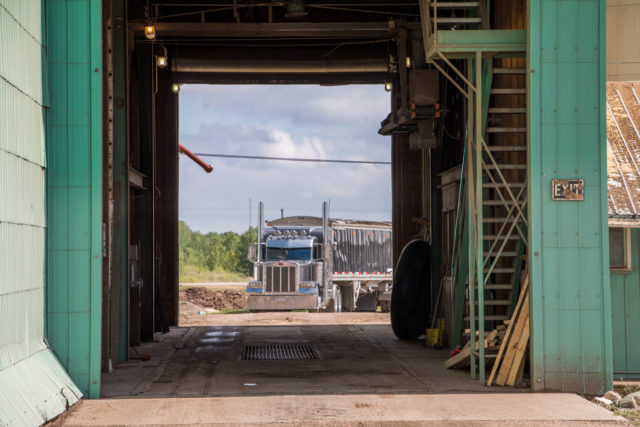
A load arrives.
The railway line passing through Bashaw belongs to Canadian National Railways. Built a just over century ago by predecessor Grand Trunk Pacific (folded into CNR early 1920s), this is the firm’s Edmonton to Calgary mainline. Traffic seems to be a bit sluggish given the downturn in the economy, amounting to a handful of trains per twenty four hour period. The entire time we spend in Bashaw documenting our subject, near a full day in fact, we saw a single freight pass.
The town of Bashaw was founded with the coming of the railway a hundred years ago. The location is the rolling plains northeast of Red Deer in central Alberta. Besides being an agricultural centre, the petroleum industry also provides employment. The community is home to some three hundred people…and change.
Bashaw Processors is part of WA Grain & Pulse Solutions. Founded in 2007 they have numerous owned outlets and partner facilities across Alberta and Saskatchewan. They deal in cereal grains, oilseeds and pulses, aka beans and peas and other legumes. A big thanks to the firm for allowing us the chance to document their rare operating wood grain elevator.
More grain elevators…
Buffalo 2000 (a different design also from the early 1980s).
Prairie Sentinels – Nanton Alberta.
Prairie Sentinels – Woodhouse Alberta – Vandervalk Farm.
A prairie sentinel falls – Torrington Alberta.
If you wish more information on what you’ve seen here, by all means contact us!
Date: May, 2016.
Location: Bashaw, AB.
Article references and thanks: Alberta Wheat Pool archives, Bashaw Processors/WA Grain & Pulse Solutions and Travis Hillaby and the rest of the Bashaw crew, Canadian National Railway archives, Town of Bashaw.
BIGDoer.com was on site with permission.
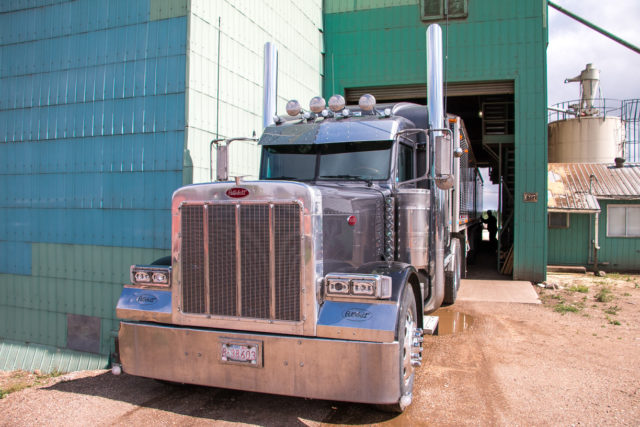
A nice grain hauler. It’s a tight squeeze!
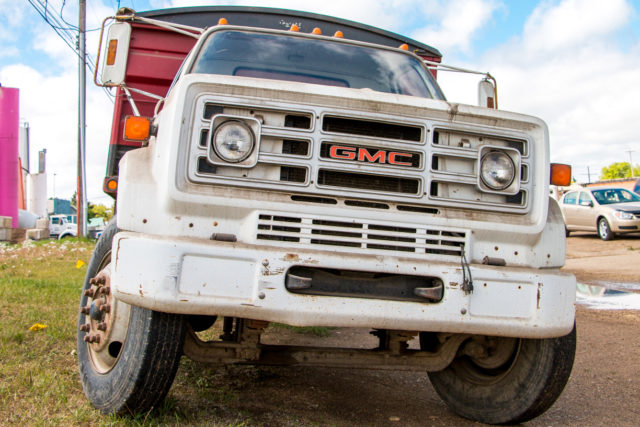
And old farm truck sits nearby.
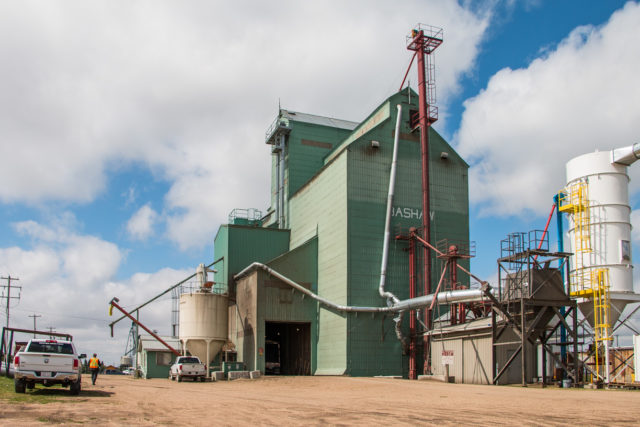
It’s rare to find a wood grain elevator still in use.
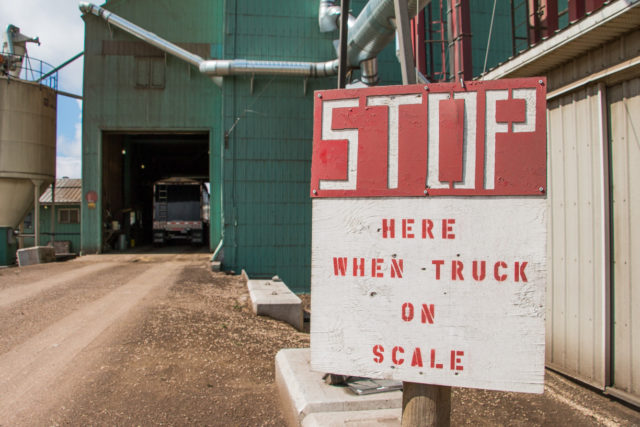
Many trucks came and went.
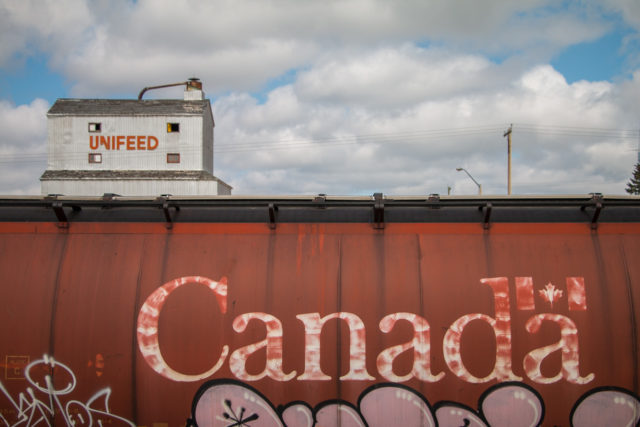
Grain cars and the old feed mill across the tracks.
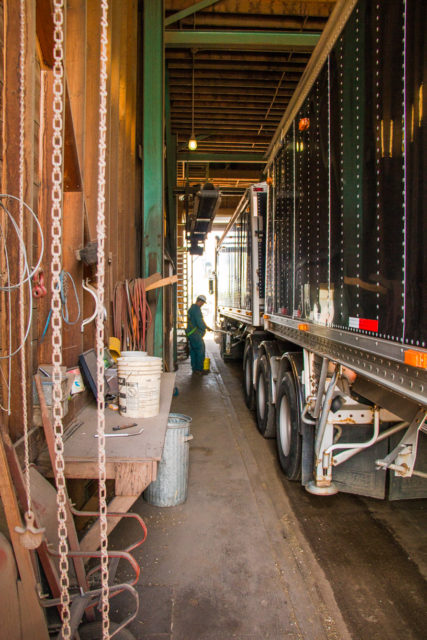
Product is sampled.
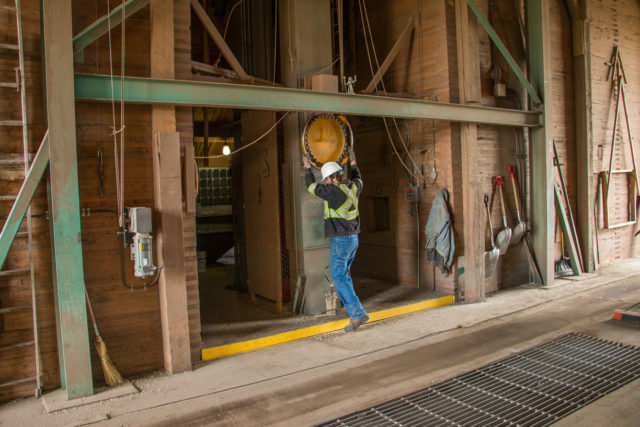
Selecting a bin to fill.
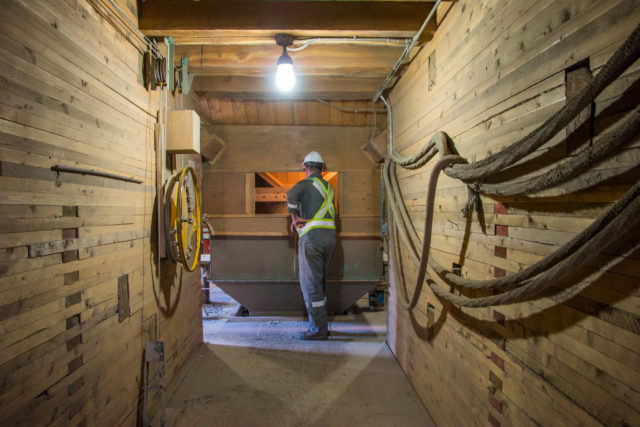
Deep inside the massive structure.
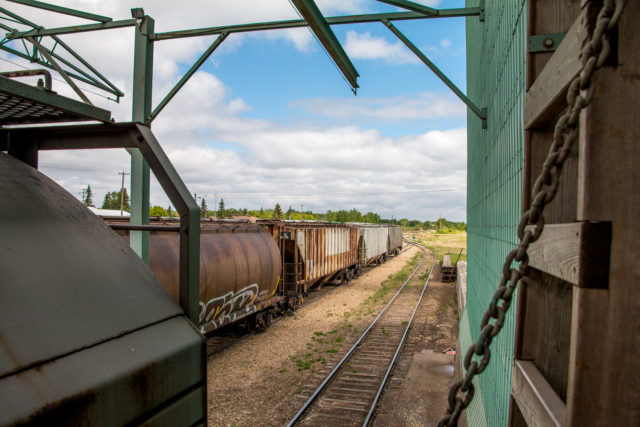
The view from the rail car loading station.
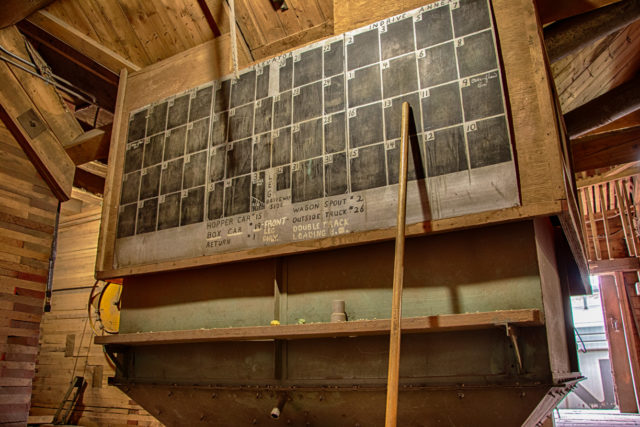
They used to keep track of what bins held what by way of this blackboard.
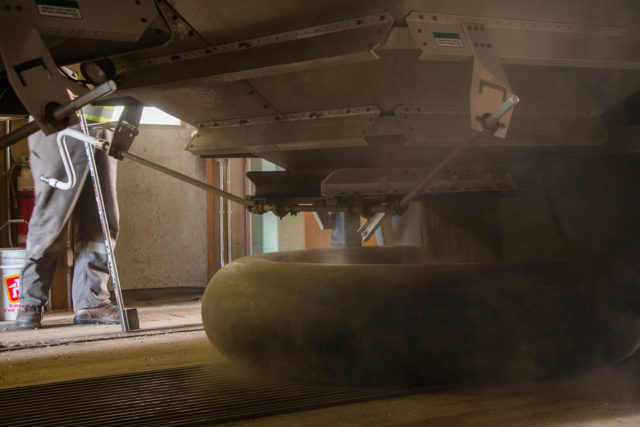
Inner tube keeps product from spilling over when being emptied.
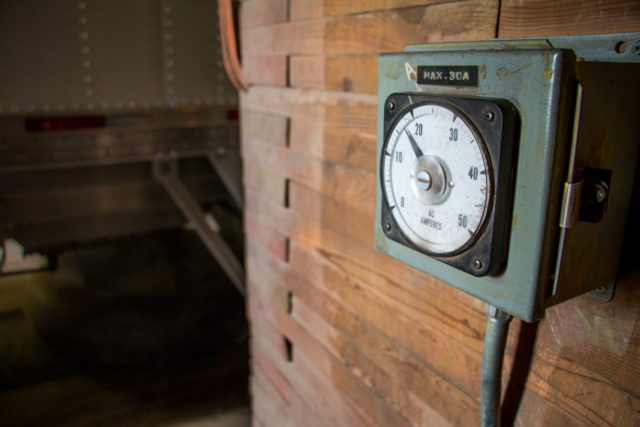
A steady 17 amps.
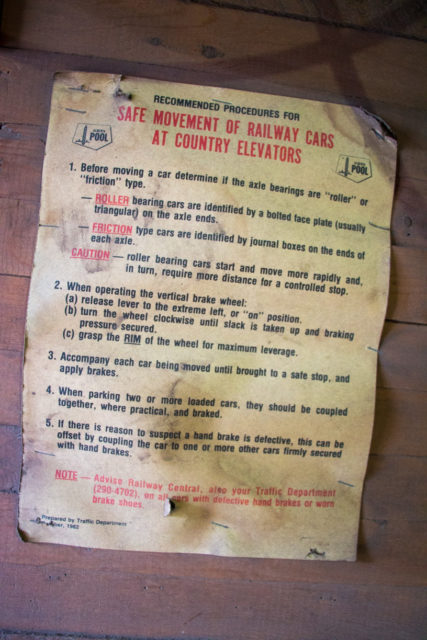
An old Alberta Wheat Pool guide to moving rail cars.
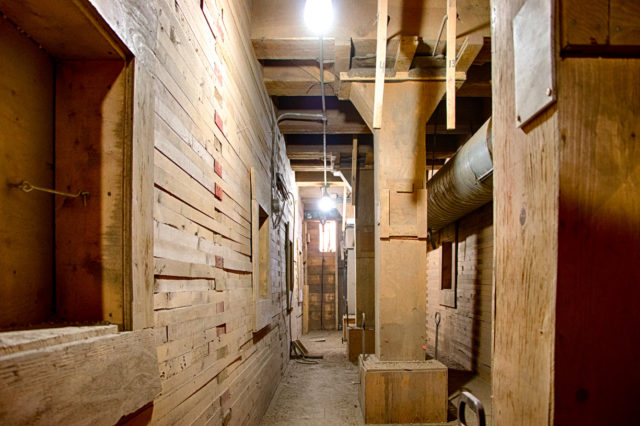
Lots of lumber in this building!
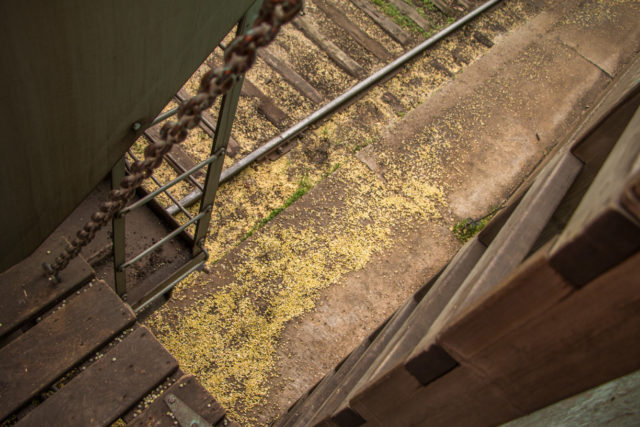
A fair drop down.
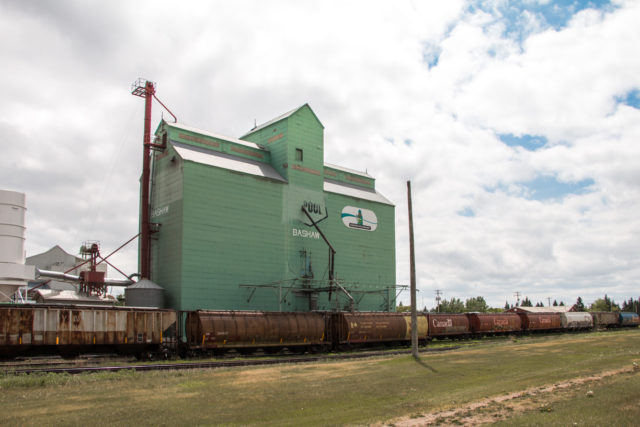
Cars will be moved to the right as they’re filled, using a winch system.
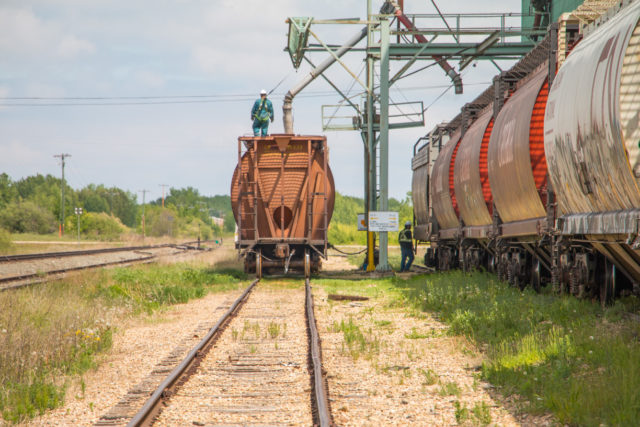
There is room here for a dozen or so cars.
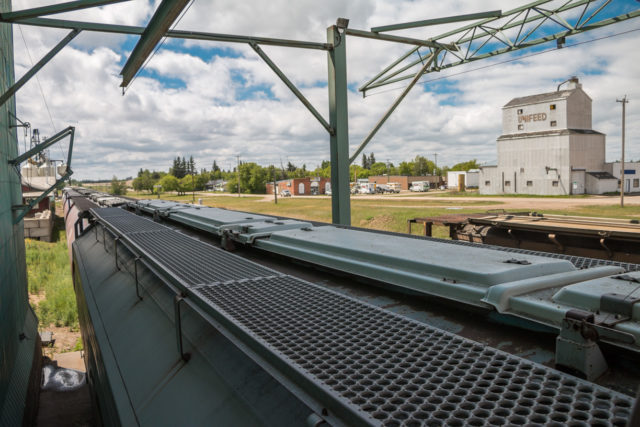
Ones in front are already loaded.
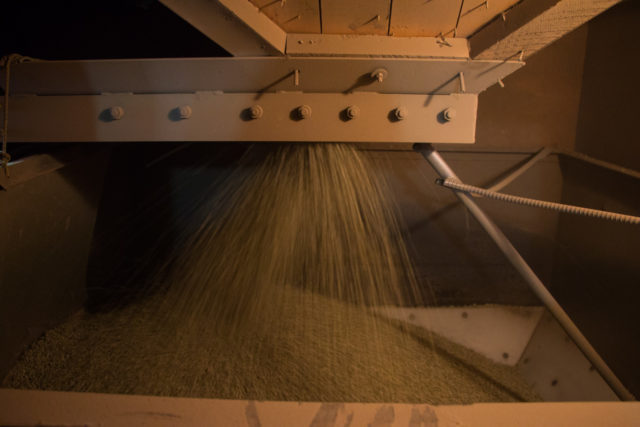
The peas flow.
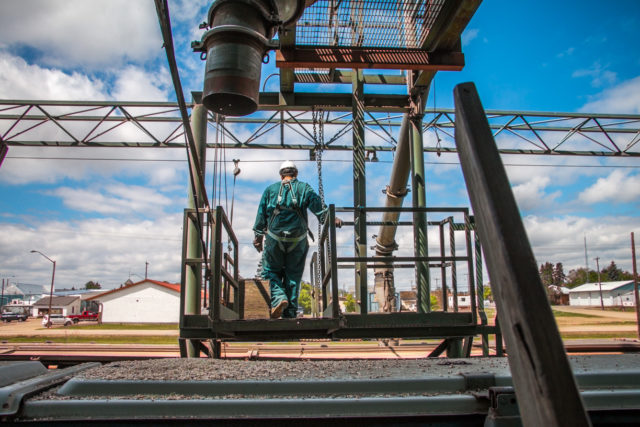
Getting ready to load another car.
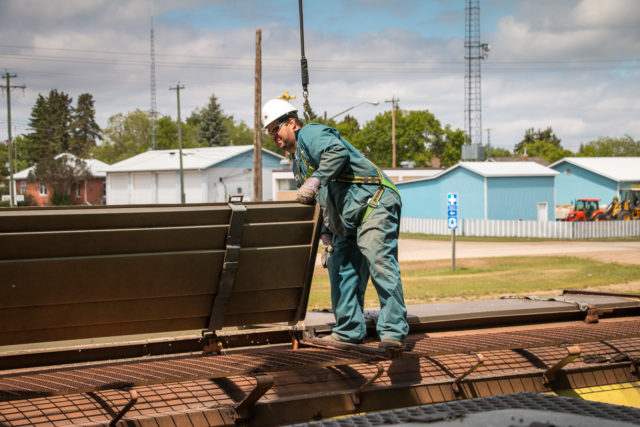
They are filled through this hatch. Note fall arresting cable.
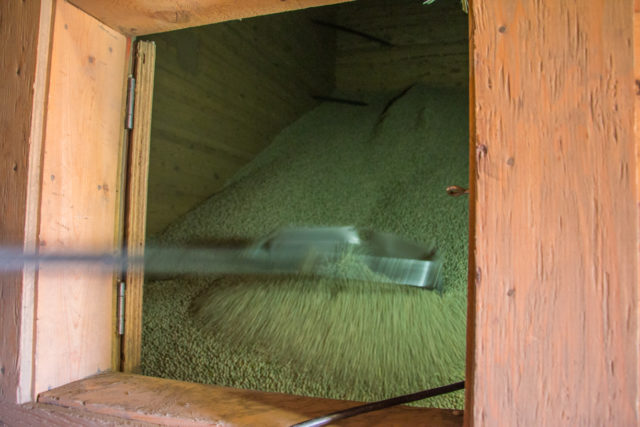
A little raking to help product flow as a bin is emptied.
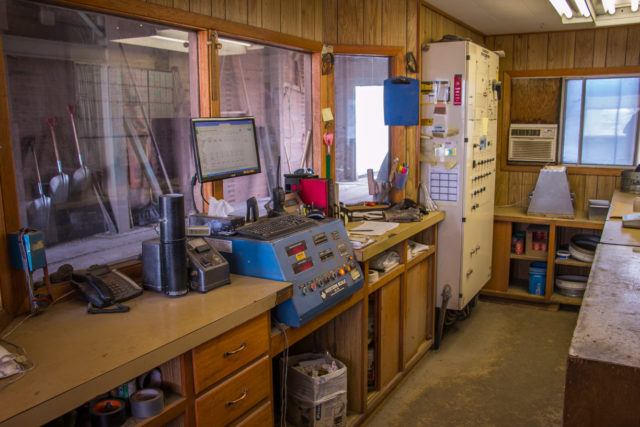
The control room.
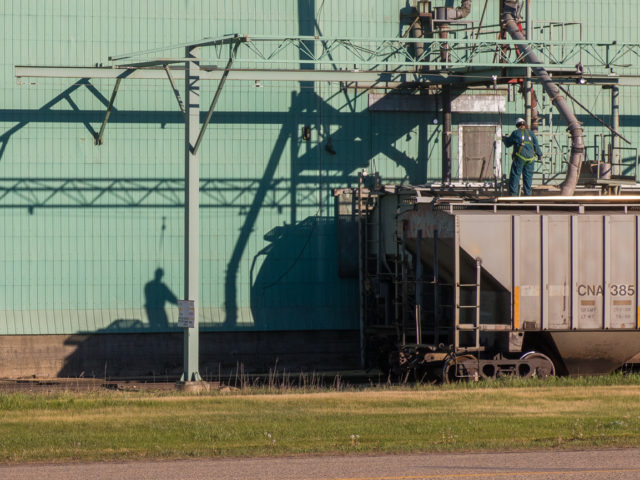
The last car, almost done.
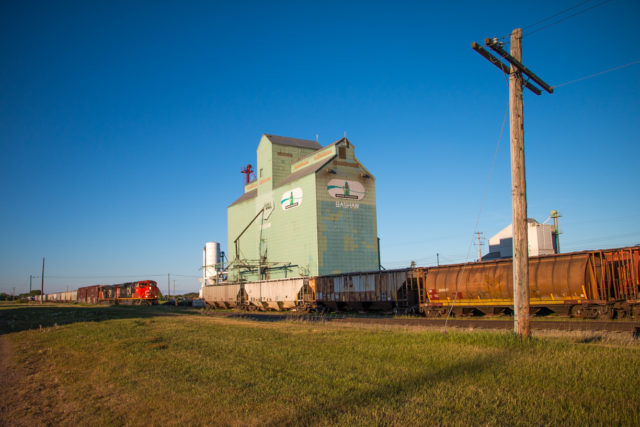
The only train to pass this day.
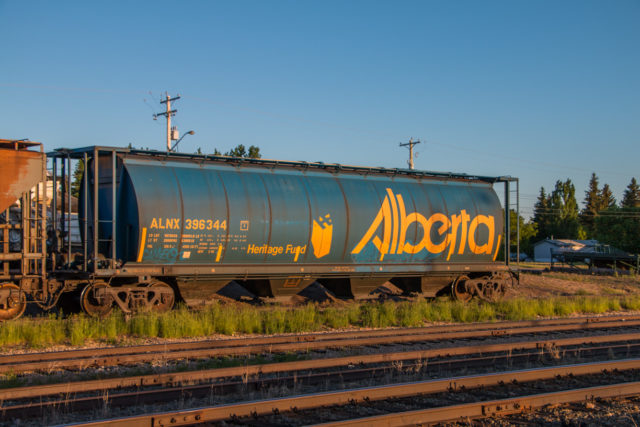
An Alberta Government Grain car.
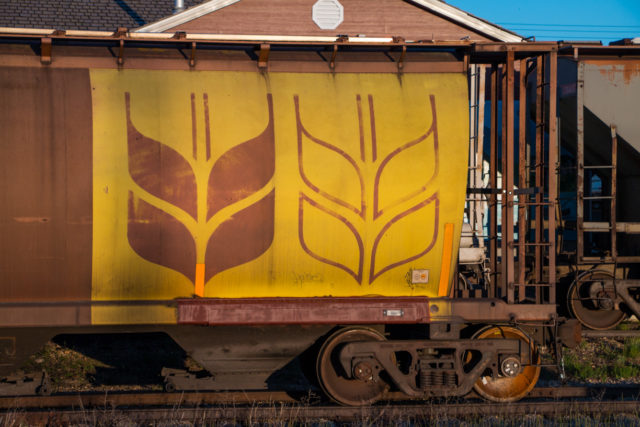
Logo from a 1970s era “Trudeau Hopper”.
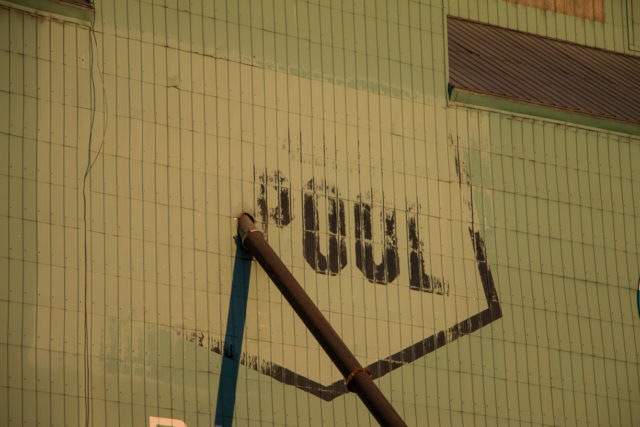
An Alberta Wheat Pool ghost sign.
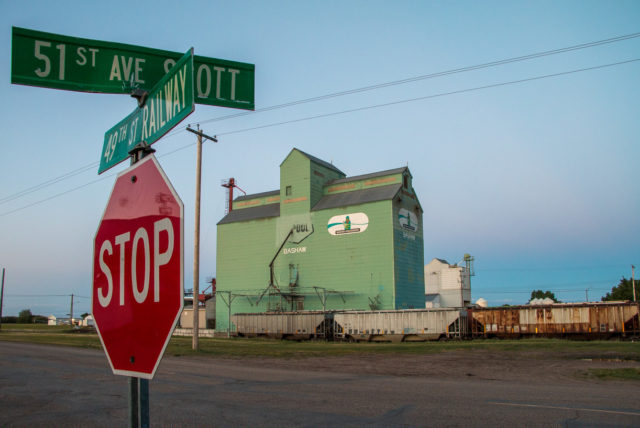
Twilight falls and everyone’s gone home.
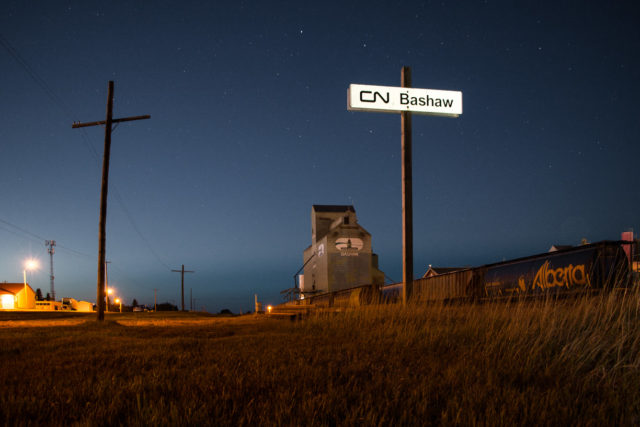
Bashaw Processors (and the whole town) all quiet after dark.

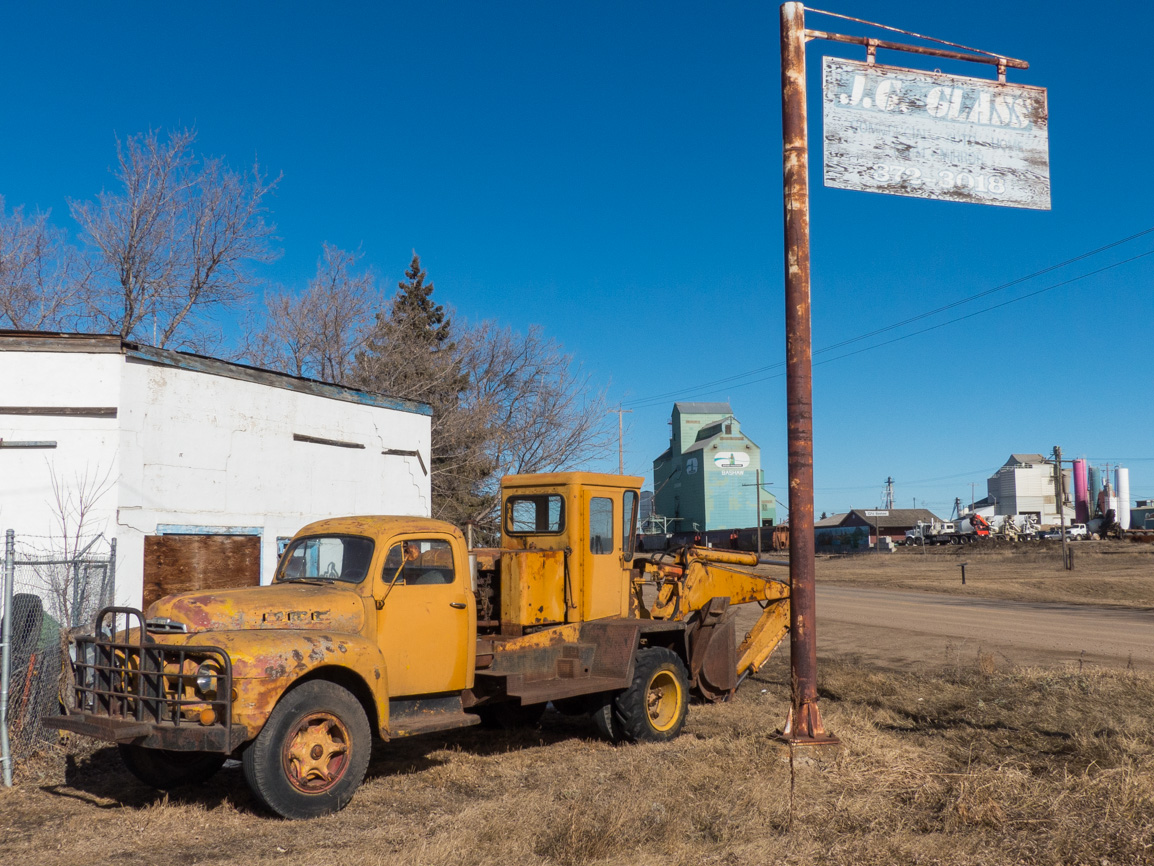
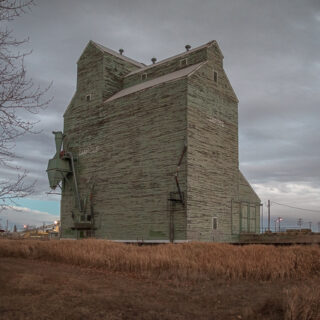
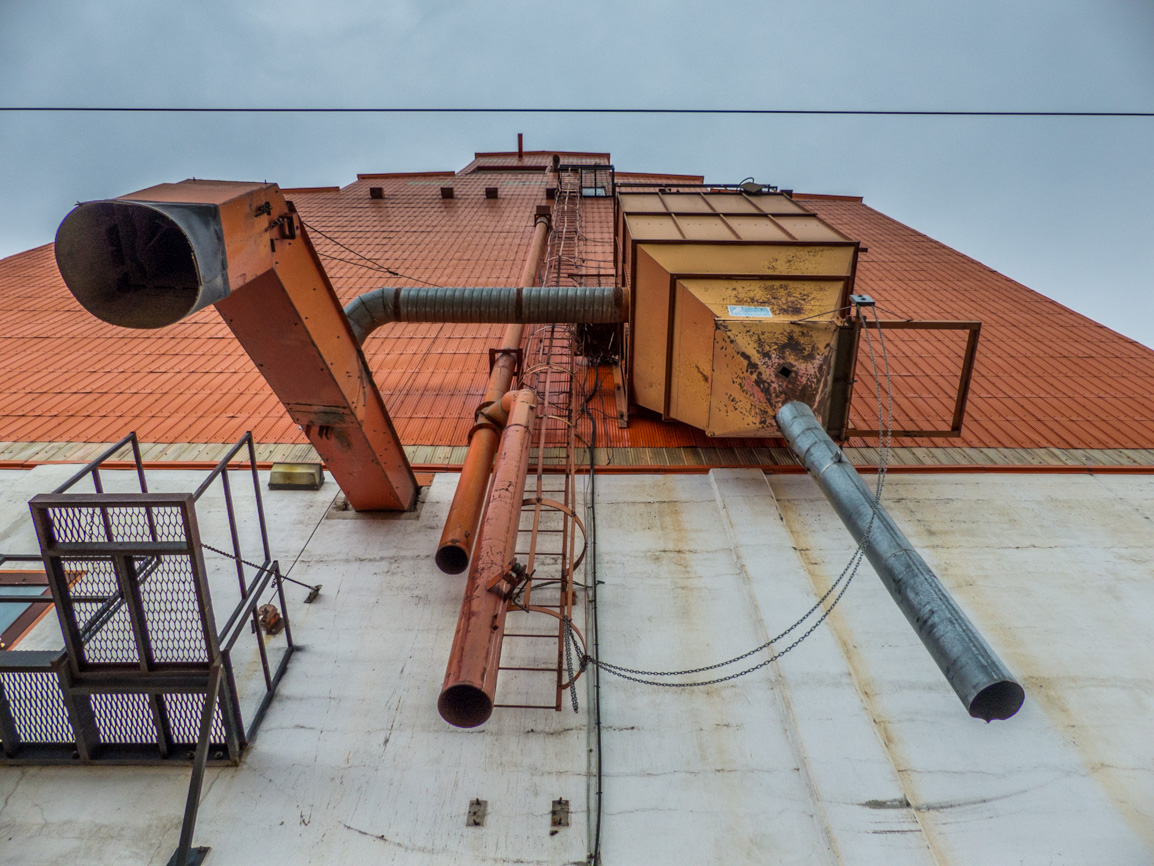
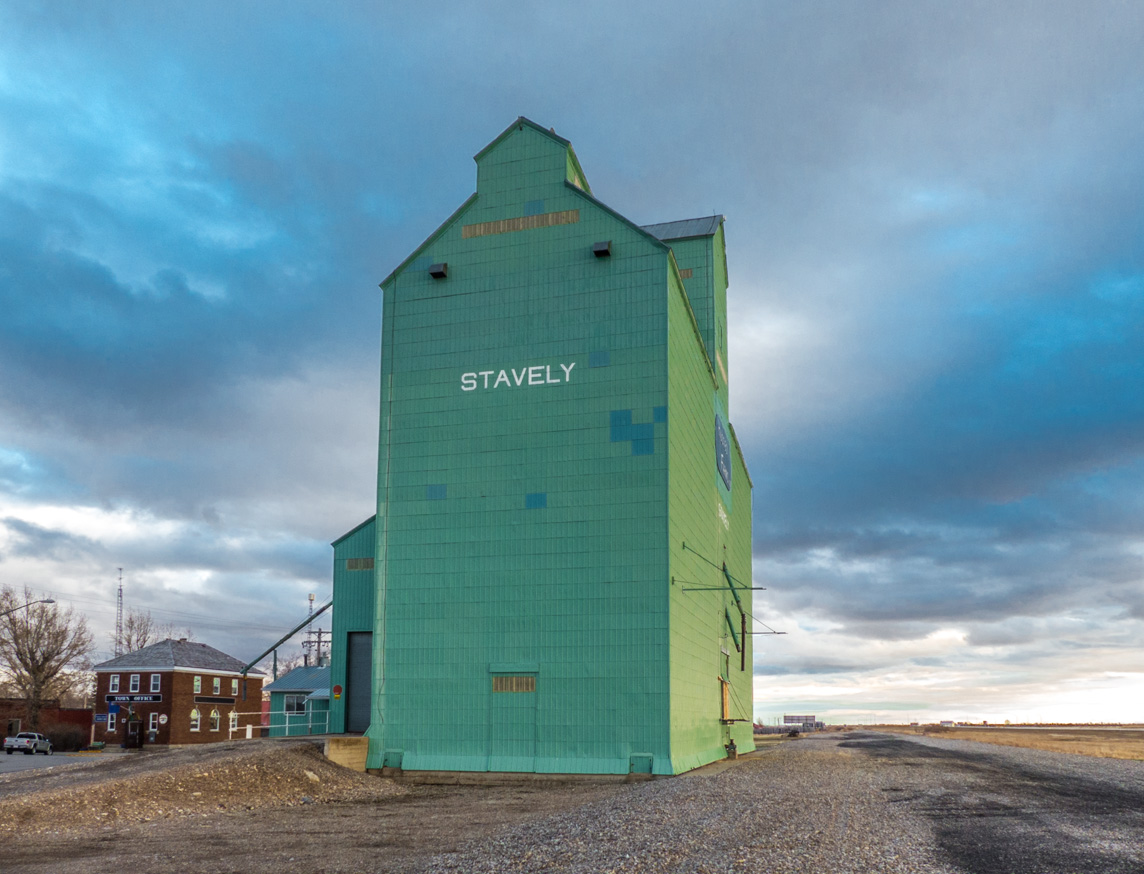
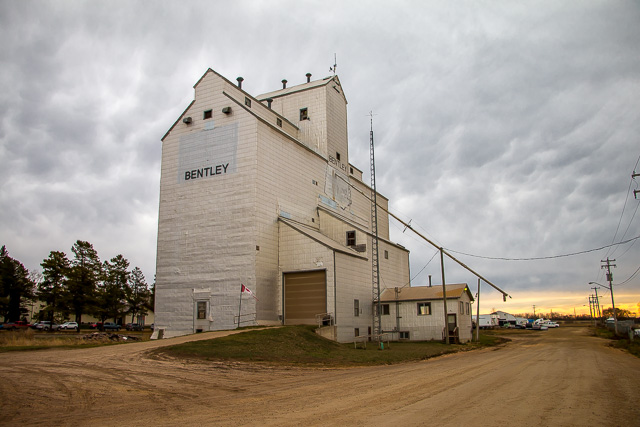
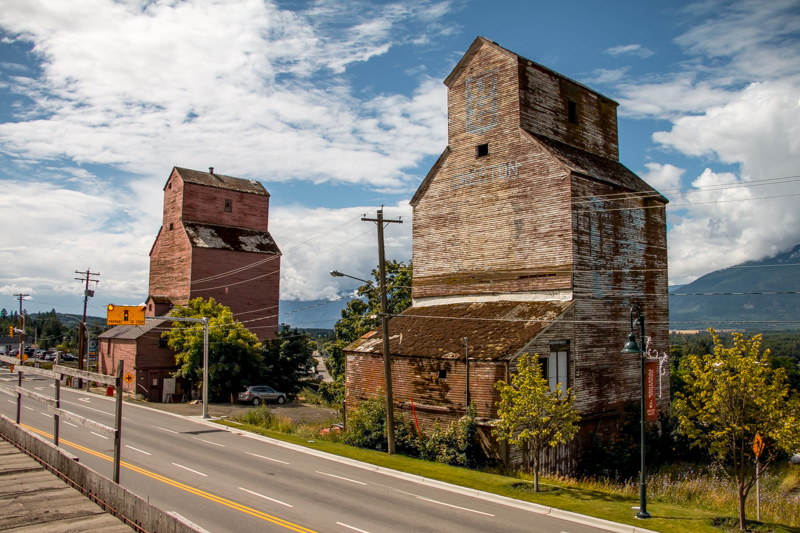
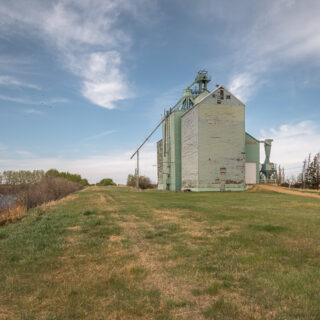
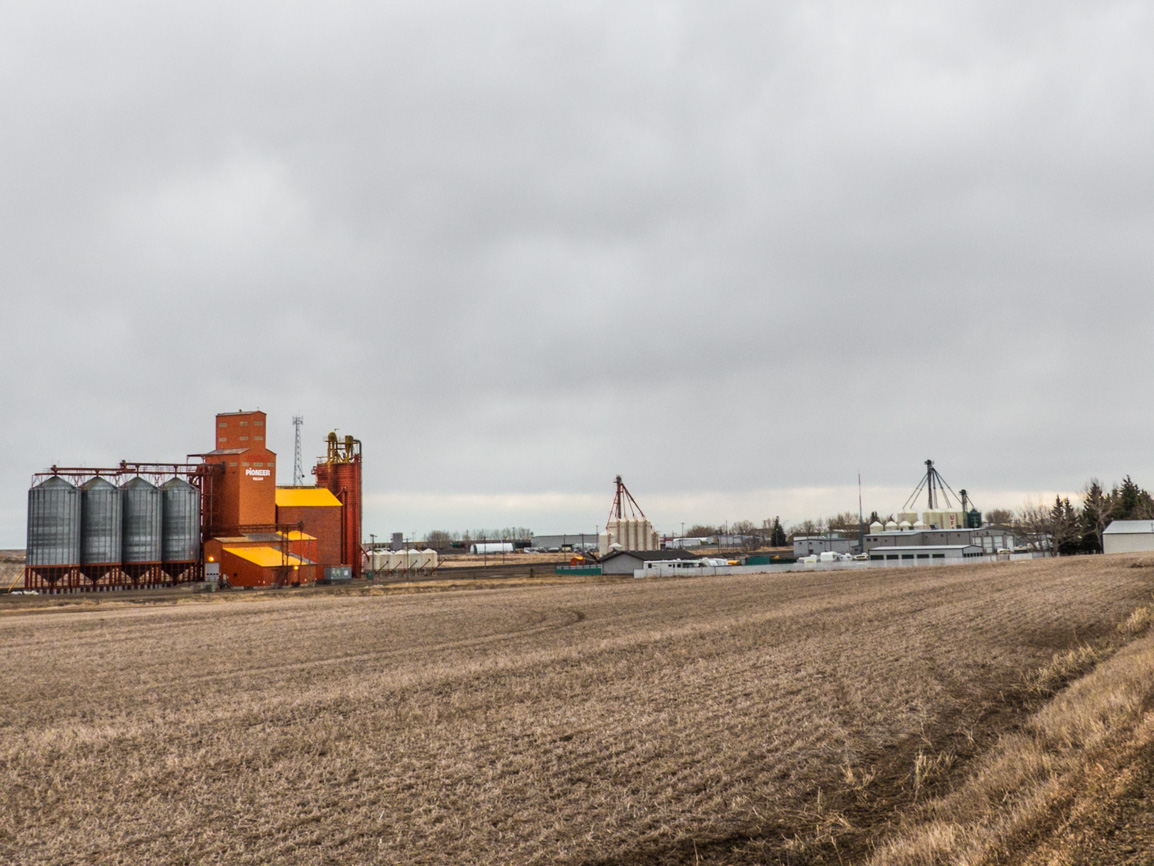
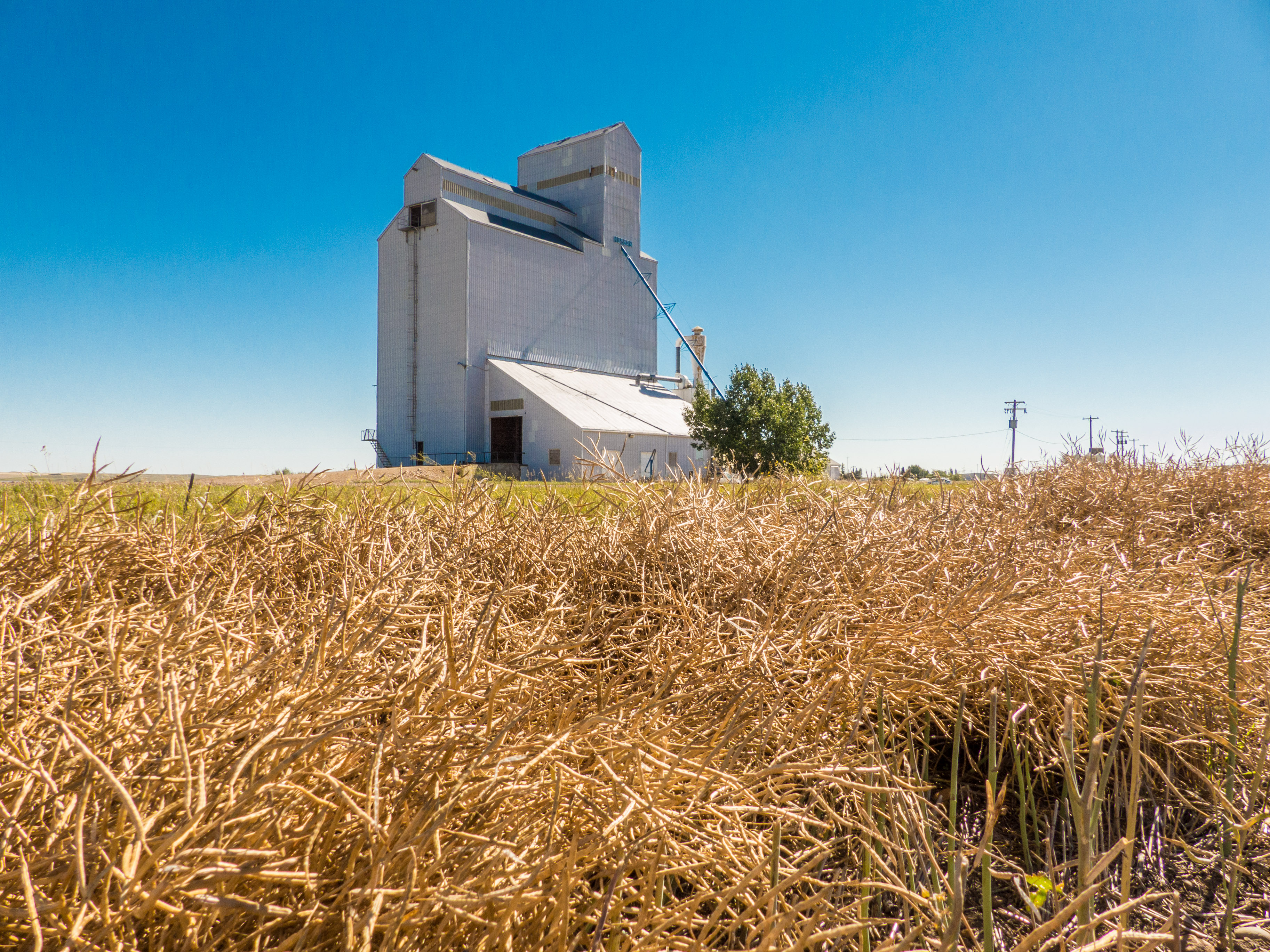
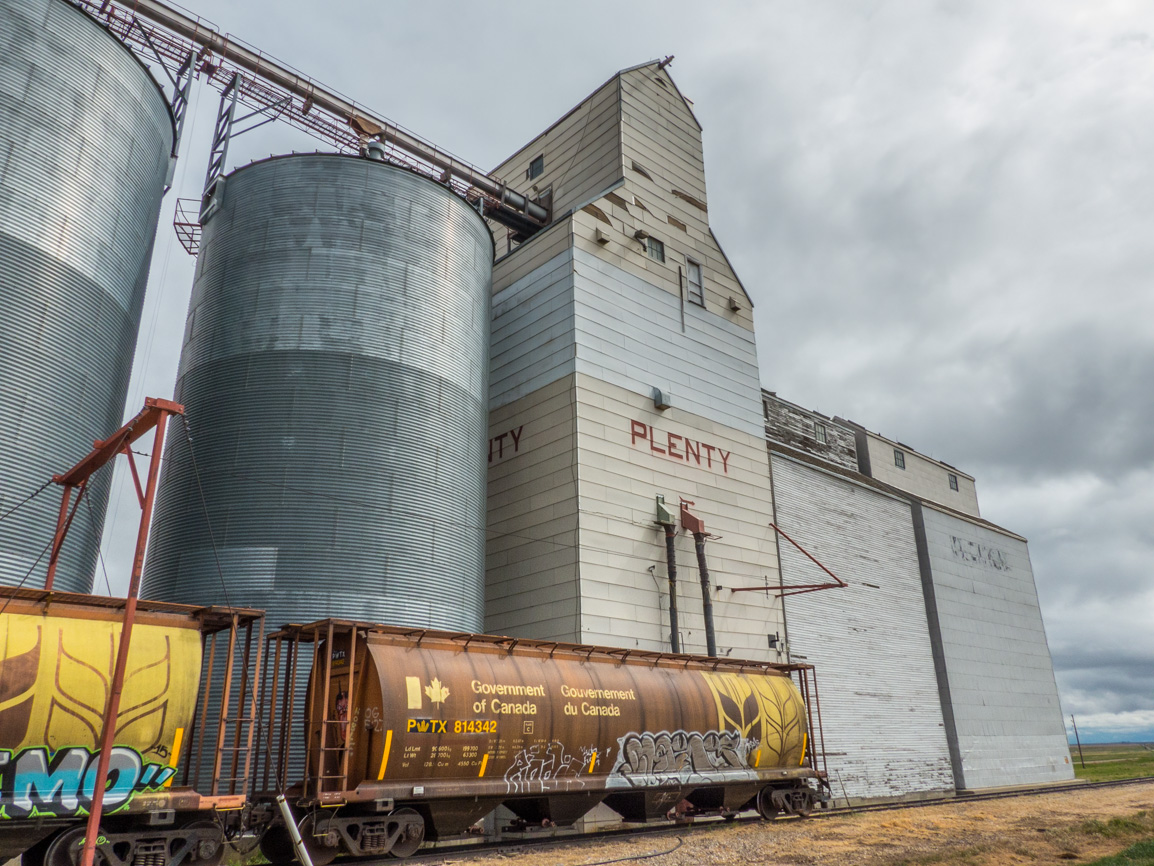
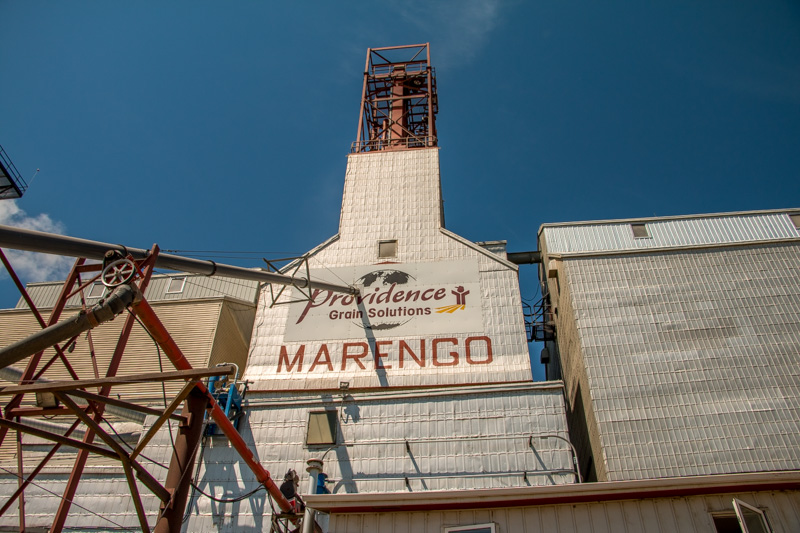








Built in 1982
Thank you for adding to the story. And keep them comments coming.
Nice that some are still in use.
Like this one!
I love grain elevators. It’s sad they’re all disappearing.
Every year there’s less and less of them, sadly.
What an awesome look inside something few people see.
I know, it was just so cool to shoot it.
Interesting info. Such a shame so many have disappeared.
Yes, but this one soldiers on at least.
Very nice series of pics. Thanks for sharing.
Any time my friend.
love these and grew up with them
They were once such an iconic part of the landscape. Now there’s so few.
I remember the grain smells that would permeate the Alberta Wheat Pool elevator my dad went to years when I was a child & got to tag along – at time it would have been unthinkable that they would ever disappear.
Cool memories! That grain elevator smell is indistinguishable. Yes, they started tearing them down and in no time they had vanished from the scene. One day were there and next gone.
My hometown! Loved growing up there. Great shot!
It’s fun to grow up in a small town.
My home town as well! Many , many , memories! Passed then by every morning riding on the school bus .And thats along time ago .
Thanks for commenting!
Worked at that elevator years ago…
Really? Any memories to share?
Just visited the Reynolds Museum in Wetaskiwin AB a few weeks ago. It has an excellent scale “inner workers” of a grain elevator that you can walk right inside and see how it worx. When you see the timbers involved in the construction…it’s amazing!!
Few people ever see the inner workings. They’re pretty darn interesting.
(via Facebook)
Worked in an elevator for 12 years, Lookin back, a nice time.
The fellows working at this one seemed to like what they do.
They are becoming a real rarity these days. Used to be a couple in almost every town across Alberta.
Yes, every one no matter the size.
Good to see grain elevators still operating as there are getting less and less of them.
Oh yeah, only a few still at work like this. So nice to see one that survived.
Awesome!! Just because it is old, doesn’t mean it cannot do the job & may be able to even do it better than new. Just because it’s new doesn’t mean it’s better!!
So true!
Wonderful photo essay and narrative. Good to see an original elevator still in use. I actually experienced delivering grain to an elevator with my father many years ago.
Yes, so interesting to see one in use. Don’t see that too often. Thanks so much for commenting!
Very well done Chris! Love the pics! And thank you for taking the time that day to go on a drive with me.
Enjoyed hanging with your Tim. Always fun to do that. Too bad, no train station.
Great report! Always good to see wooden grain elevators in use. The AWP poster on railcar loading is neat to see!
How to handle roller bearing or friction bearing cars! The latter suggests, yes it does, boxcars! In that vein, the chalkboard (maybe hard to see in the photos) lists which of the tracks was for boxcar loading. I wonder how many they filled?. They were surely on the way out by the time this elevator came on the scene.